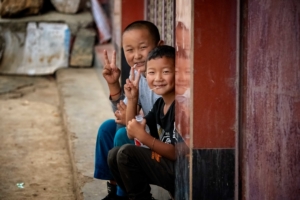The Strategy to Relieve Hunger in China
 With a 2023 population of 1.4 billion, the second-largest economy globally and home to 862,400 million millionaires, it may be easy to forget about poverty and hunger in China. The most recent poverty estimates for China date back to 2020, when the government claimed rural poverty was eliminated according to the National Poverty Line. However, 1.6 million people still fall below the International Poverty Line. Despite this, China is classified as an upper-middle income economy, and by that standard, almost a quarter of the population—almost 348 million people—would be considered to be living below poverty.
With a 2023 population of 1.4 billion, the second-largest economy globally and home to 862,400 million millionaires, it may be easy to forget about poverty and hunger in China. The most recent poverty estimates for China date back to 2020, when the government claimed rural poverty was eliminated according to the National Poverty Line. However, 1.6 million people still fall below the International Poverty Line. Despite this, China is classified as an upper-middle income economy, and by that standard, almost a quarter of the population—almost 348 million people—would be considered to be living below poverty.
Climate Disasters
The challenges faced by the poor have been exacerbated by severe weather conditions in China’s agricultural heartland. In June 2024, a combination of heat and drought severely impacted the region, followed by heavy rains, floods and landslides in July that resulted in the evacuation of tens of thousands of people. This is just the most recent of extreme weather catastrophes resulting from climate changes that are unlikely to slow down. These most recent floods resulted in direct economic losses of $13 billion, affecting 32 million people. The expected impact on food security, especially because of the effect on the country’s grain supply, was not lost on the Chinese government. Acknowledged as the greatest greenhouse gas emitter globally, China struggles with the need to transition to green energy while meeting the high demand for power.
Hunger in China
Historically, China has seen more than its share of food crises and famines. China currently is feeding almost 20% of the world’s population, with less than 10% of the world’s arable land and 6% of its water resources. It is the largest agricultural importer globally, although—as with many other economies—both COVID-19 and the war in Ukraine have stressed this dependence on other countries even further. In addition to the insufficiency of its natural resources, other factors impacting food supply are agricultural inefficiencies, consumer habits, food safety, supply chain issues and international trade dynamics, among others.
The 2023 Global Hunger Index identified China as one of 20 countries with a GHI score in the Low category, but that was because there was insufficient data to calculate a score. Based on the indicators of the percentage of the population undernourished, and percent children younger than 5 who suffered from child wasting, child stunting and child mortality, China has seen a steady decline in these hunger-related issues since 2000.
Increasing Food Security
Despite these improvements, food security is seen by the Chinese government as essential to minimizing grievances and threats to regime stability. Since becoming China’s president over a decade ago, Xi Jinping has focused on the country’s agricultural self-sufficiency, diversification and technology, with food security a national priority. The regime’s multifaceted strategy identified its greatest challenges as diminishing arable land, decentralized governance, changing consumer demands, workforce dynamics, productivity and technological issues, climate change, food waste and geopolitical dynamics.
In June of this year, China addressed one aspect of food security—the need for “absolute” self-sufficiency in staple grains—by implementing a Food Security Law. This law includes the protection of farmland and places accountability on provincial and central governments to incorporate food security in their development and economic planning. The intention is to decrease imports and expand the use of science and technology to increase food production. This builds on the country’s 14th Five-Year Plan (2021-2025) to increase grain and meat production, with “poverty eradication in rural areas, food security and seed development” as top priorities.
– Staff Reports
Photo: Flickr
Updated: September 10, 2024
